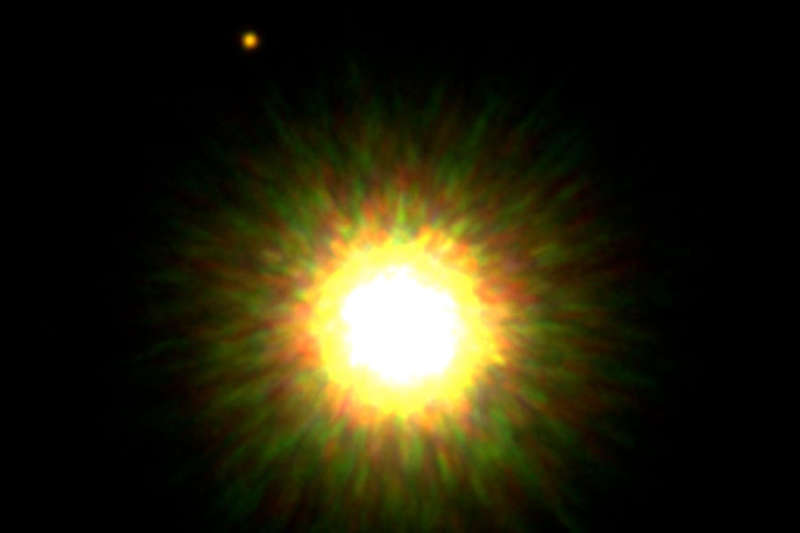
|
Credit & Copyright: Gemini Observatory,
D. Lafreniere, R. Jayawardhana, M. van Kerkwijk
(Univ. Toronto)
Explanation:
The first direct image of an extrasolar planet orbiting a star similar to our Sun
has been confirmed.
Located just 500 light-years away toward the constellation
Scorpius,
the parent star, cataloged as 1RXS J160929.1-210524,
is only slightly less massive and a little cooler than
the Sun.
The star is, however, much younger, a few
million years old
compared to the middle-aged Sun's 5
billion years.
This sharp infrared
image shows the young star's planetary companion
positioned above and left of center.
The planet is estimated to have a mass about 8 times
the mass of Jupiter, and orbit a whopping 330 times the Earth-Sun
distance from its parent star.
The young planetary companion is still hot and relatively
bright in
infrared light, likely due to
the heat generated during its
formation by gravitational contraction.
In fact, such newborn planets
are easier to detect before they age and cool and become much more faint.
The discovery image, shown above, was taken in 2008 but
confirmed only recently
by noting that the planet stayed with its parent star as background stars slightly
shifted over time.
|
January February March April May June July August September October November December |
| ||||||||||||||||||||||||||||||||||||||||||||||||
NASA Web Site Statements, Warnings, and Disclaimers
NASA Official: Jay Norris. Specific rights apply.
A service of: LHEA at NASA / GSFC
& Michigan Tech. U.
Based on Astronomy Picture
Of the Day
Publications with keywords: extrasolar planet
Publications with words: extrasolar planet
See also:
- APOD: 2025 September 8 Á IRAS 04302: Butterfly Disk Planet Formation
- APOD: 2024 July 8 Á Exoplanet Zoo: Other Stars
- Temperatures on Exoplanet WASP 43b
- Epsilon Tauri: Star with Planet
- APOD: 2023 October 17 Á PDS 70: Disk, Planets, and Moons
- APOD: 2023 September 20 Á Methane Discovered on Distant Exoplanet
- APOD: 2023 June 6 Á Star Eats Planet
